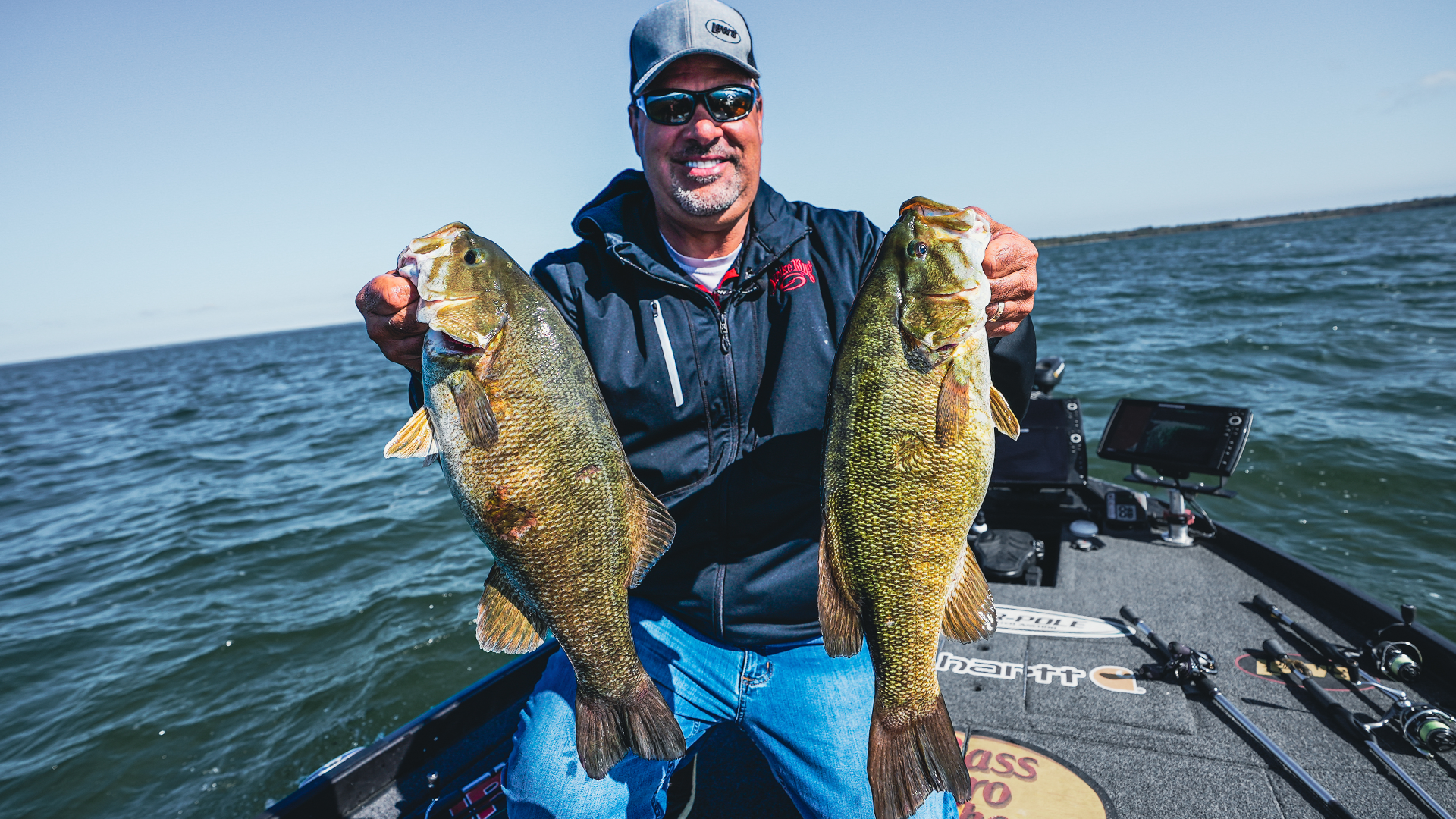Finding and catching smallmouth bass spread out across sprawling flats is challenging for all anglers. Mark Zona shares some helpful information for finding and catching scattered brown bass on the Great Lakes and inland fisheries. As Zona instructs, seemingly endless flats concentrate bass in specific spots, and these spots usually feature a combination of cover types and forage. He explains how to locate smallmouth bass by idling around and using your naked eye in clear water fisheries. He also covers his approach to lures and why he favors moving baits and heavily-weighted terminal setups over slow-moving presentations.
TACKLE USED (retail links)
- TUBE – Strike King Coffee Tube
- JIG – Bite-Me Tackle “Stupid Tube” Jig
- ROD – Lew’s Signature Series Spinning Rod, 7’2 Medium
- REEL – Lew’s HyperMag SpeedSpin Spinning Reel
- LINE – Seaguar AbrazX 100% Fluorocarbon, 8- to 10-pound
- LIPLESS CRANKBAIT – Strike King Red Eye Shad, 3/4-ounce
- ROD – Lew’s Signature Series Casting Rod, 7′ Medium
- REEL – Lew’s Pro Ti Speed Spool SLP
- LINE – Seaguar AbrazX 100% Fluorocarbon, 12-pound
- SUNGLASSES – Strike King S11 Optics Sunglasses
As with most bass fishing, areas of difference are key. Mixes of cover types such as rock, sand, gravel, and grass create distinct edges, and these transition zones function as highways that concentrate smallmouth bass. While side imaging, 360 imaging, and forward-facing sonar work excellently (if equipped), Zona still prefers plopping a person at wheel and on the front deck with a set of polarized sunglasses. The naked eye works wonders for seeing fish, forage, and cover elements in shallow, clear water fisheries. Boulders are also prime, with smallmouth bass commonly setting up residence from the spawn through the fall months. Drop a waypoint on isolated boulders, and always be sure to check them. The “palm trees in the desert” analogy couldn’t be more perfect.
While mixed cover and forage usually go hand-in-hand, it’s not always the case. Zona stresses only fishing areas with forage, be it crawfish or baitfish. Forgo the slow finesse tactics here. Instead, Zona relies on fast-moving lures to contact smallmouth bass, be it moving baits or fast-dropping bottom tactics such as cracking a tube or drop-shotting. These presentations elicit an aggressive feeding response and speed the process of finding the “hornet’s nest” of bass. When you find one, get ready to cash in!












